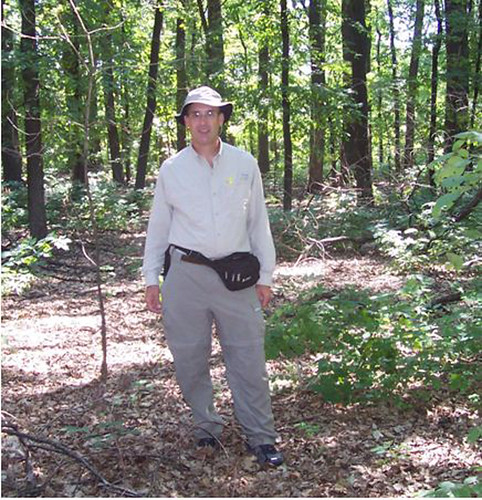
This post is part of the Science Tuesday feature series on the USDA blog. Check back each week as we showcase stories and news from USDA’s rich science and research portfolio.
The language on the 1930s poster for the Prairie States Forestry Project was downright plaintive: “Trees Prevent Soil Erosion/Save Moisture/Protect Crops/Contribute to Human Comfort and Happiness.”
The mission of the project, initiated by President Franklin Roosevelt, was to encourage landowners to plant tree windbreaks on cropland ravaged by dust storms and drought. As a result, more than 210 million trees from North Dakota to Texas were planted in 18,500 miles of windbreaks, some of which still remain.
Now Agricultural Research Service (ARS) soil scientist Tom Sauer is working to bring more trees to the Central Plains, and he’s expanding their role.
Sauer is exploring whether trees planted as windbreaks can provide a sustainable supply of feedstock for bioenergy production. He also wants to develop projections of how much carbon these trees could potentially sequester in their woody biomass and in the soil, which would help reduce carbon dioxide levels in the atmosphere.
With a grant from USDA’s North Central Region Sustainable Agricultural Research and Education (NCR-SARE) program, Sauer and researchers from Iowa State University, the University of Nebraska at Lincoln, and USDA’s Natural Resources Conservation Service and Forest Service are currently conducting surveys with farmers and ranchers interested in adding agroforestry to their land-use practices. The interviews give farmers a chance to explore land-use tradeoffs and identify agroforestry management issues such as planting, maintenance, and harvesting methods.
This first round of discussions will help the team fine-tune future field surveys and develop a more comprehensive understanding of the key issues and concerns farmers have about agroforestry. Sauer also hopes to develop a comprehensive financial and land-user based socio-economic assessment that will complement field studies with a complete accounting and evaluation of producer interest in Central Plains agroforestry systems.
“In the end, we need to gauge landowner interest in agroforestry,” Sauer says. “Once we’ve finished that first step, then we can develop research plans to better address those needs.”
In 2011, USDA released the Agroforestry Strategic Framework to provide direction across the Department and explain how USDA agencies are joining forces to support the science and adoption of agroforestry. More information can be found at the USDA Agroforestry website.

